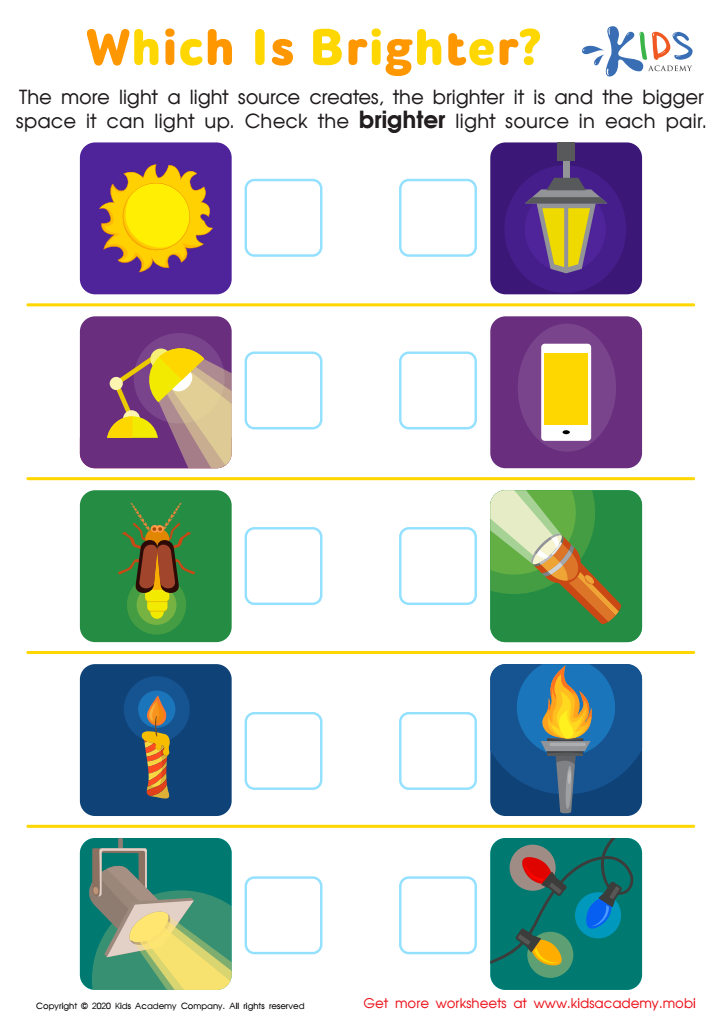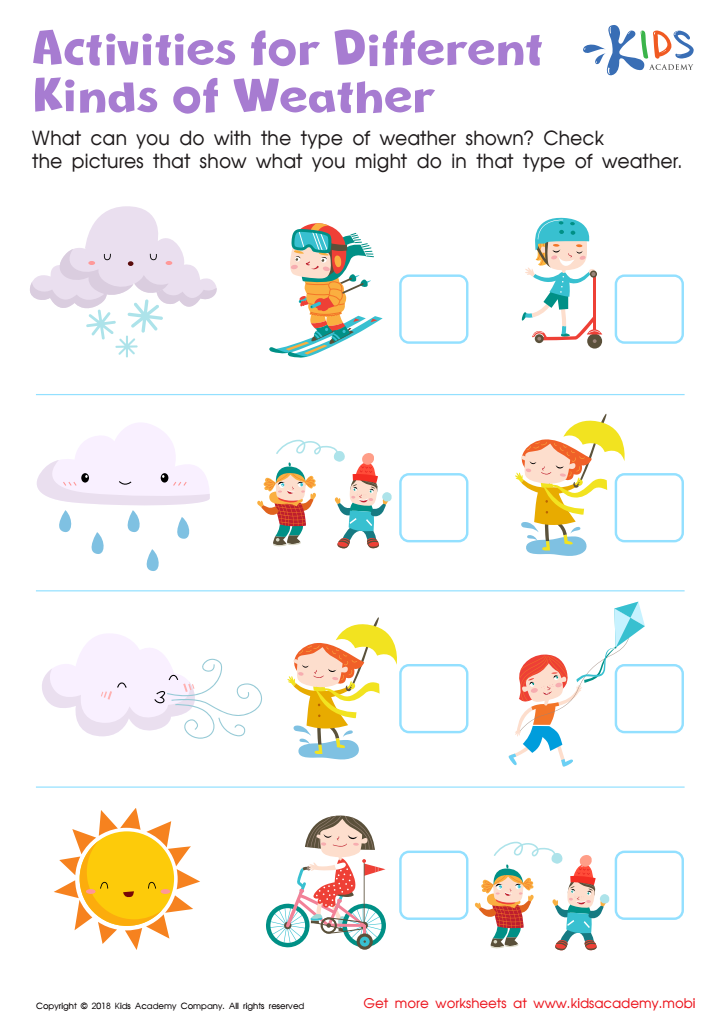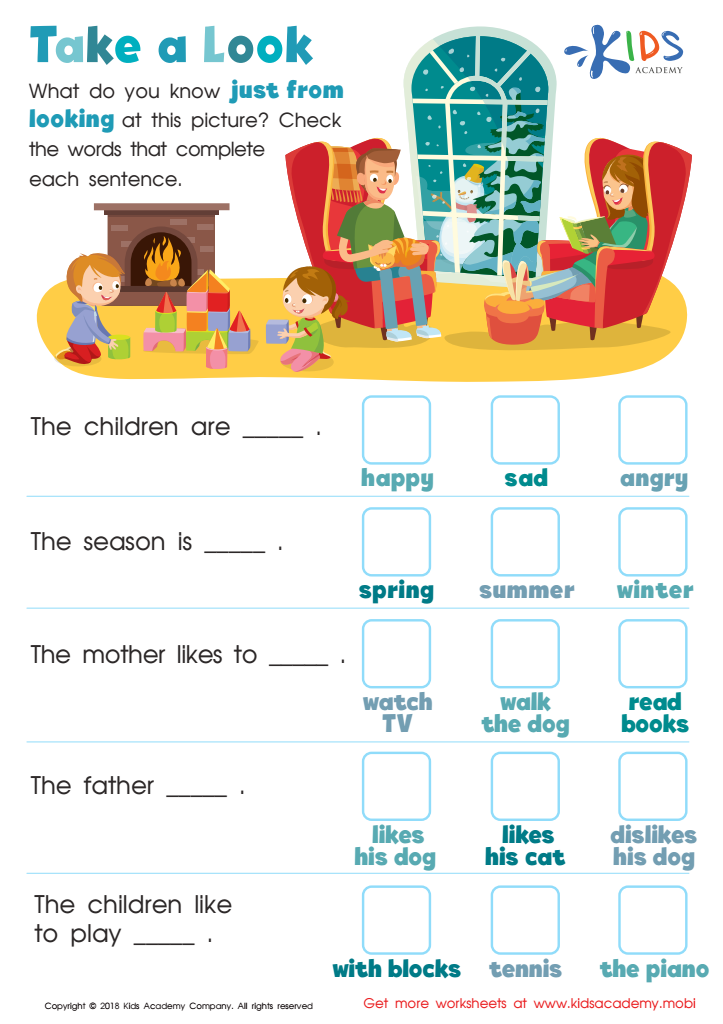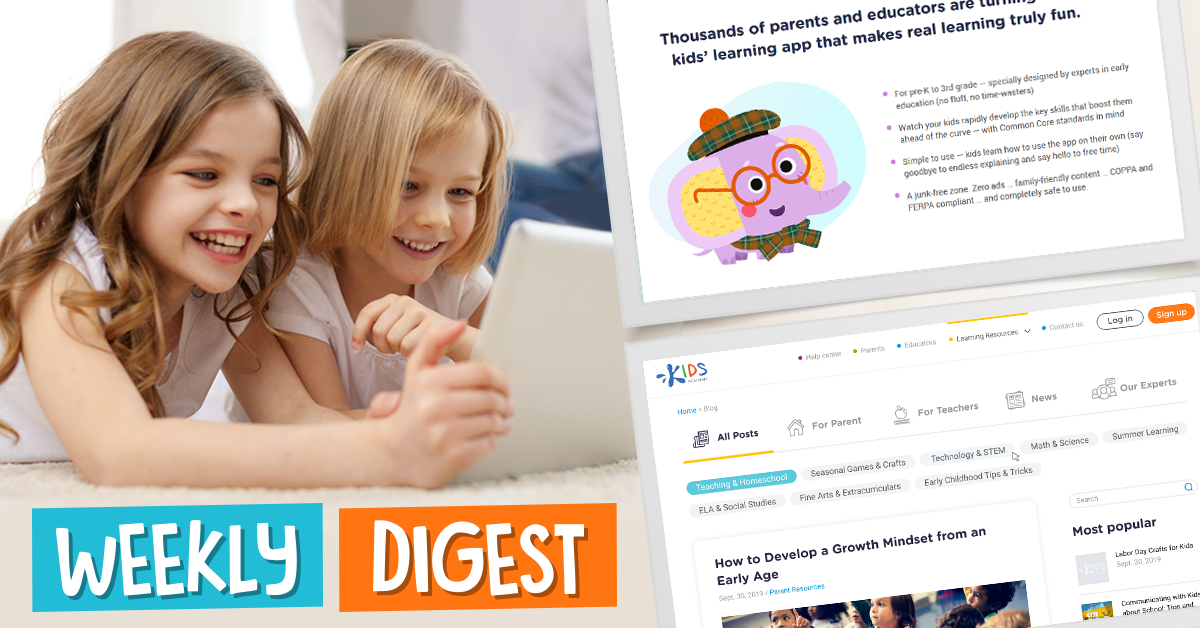Identifying differences Normal Worksheets for Ages 5-7
3 filtered results
-
From - To
Discover engaging and educational identifying differences worksheets designed for children ages 5-7. These expertly crafted worksheets help young learners develop critical thinking, visual discrimination, and observation skills in a fun way. Your child will delight in spotting differences and unique features among various images, enhancing their attention to detail. Perfect for both classroom and home use, these worksheets align with early learning standards and provide a solid foundation for future learning. Boost your child’s cognitive abilities and keep them entertained with our printable identifying differences worksheets! Visit us now at Kids Academy!


Which Is Brighter? Worksheet


Activities for Different Kinds of Weather Worksheet


Take a Look - Part 1 Worksheet
Identifying developmental differences in children aged 5-7 is crucial for both parents and teachers because this stage marks a significant period of growth in many areas: cognitive, social-emotional, and physical. At this age, children are beginning to develop foundational skills in reading, writing, math, and social interaction. Recognizing both the typical milestones and any deviations is vital for early intervention, which can significantly influence a child’s academic and social success.
Potential signs like difficulty in communication, inability to follow instructions, or challenges in motor skills can be early indicators of learning disabilities, ADHD, autism spectrum disorders, or other developmental issues. Early identification enables the implementation of tailored support strategies, such as speech therapy, behavioral interventions, or individualized education plans (IEPs), thus addressing the child's unique needs effectively.
Ignoring these differences can lead to struggles in self-esteem, academic performance, and peer relationships as children grow older. Teachers and parents play a pivotal role in their observations and interactions with the child, making them the first line of defense in recognizing and addressing these issues. Early detection and intervention not only support the child in reaching their full potential but also foster an inclusive environment that celebrates and caters to diverse learning styles and abilities.

 Assign to My Students
Assign to My Students
















